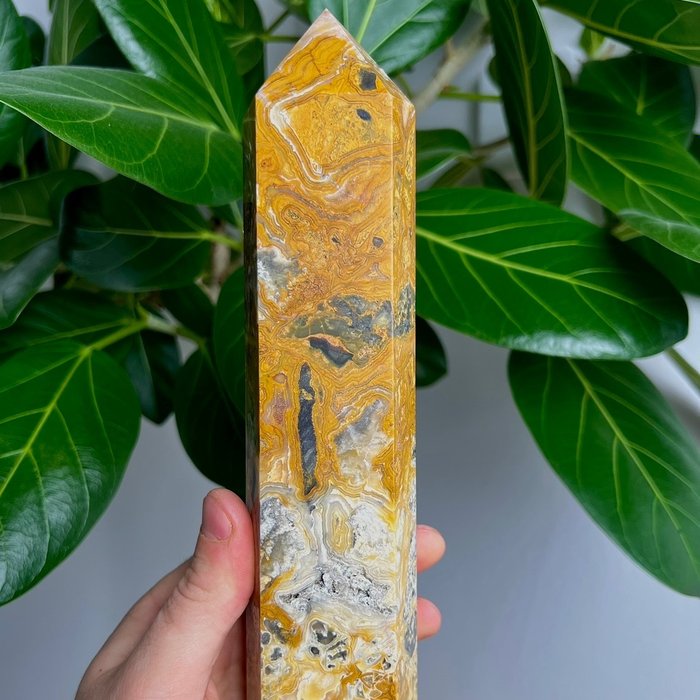
Agate Phénix grande tour d'agate Phoenix AAA - Hauteur : 19.1 cm - Largeur : 6 cm- 900 g
Nº 82214317

Nº 82214317

large Phoenix Agate AAA tower point
Agate (/ˈæɡɪt/) is the banded variety of chalcedony,[2] which comes in a wide variety of colors. Agates are primarily formed within volcanic and metamorphic rocks. The ornamental use of agate was common in Ancient Greece, in assorted jewelry and in the seal stones of Greek warriors,[3] while bead necklaces with pierced and polished agate date back to the 3rd millennium BCE in the Indus Valley civilisation.
Agate minerals have the tendency to form on or within pre-existing rocks, creating difficulties in accurately determining their time of formation.[6] Their host rocks have been dated to have formed as early as the Archean Eon. Agates are most commonly found as nodules within the cavities of volcanic rocks. These cavities are formed from the gases trapped within the liquid volcanic material forming vesicles.[7] Cavities are then filled in with silica-rich fluids from the volcanic[7] material, layers are deposited on the walls of the cavity slowly working their way inwards.[8] The first layer deposited on the cavity walls is commonly known as the priming layer.[9] Variations in the character of the solution or in the conditions of deposition may cause a corresponding variation in the successive layers. These variations in layers result in bands of chalcedony, often alternating with layers of crystalline quartz forming banded agate.[7] Hollow agates can also form due to the deposition of liquid-rich silica not penetrating deep enough to fill the cavity completely.[10] Agate will form crystals within the reduced cavity, and the apex of each crystal may point towards the center of the cavity.
The priming layer is often dark green, but can be modified by iron oxide resulting in a rust like appearance.[9] Agate is very durable, and is often found detached from its host matrix, which has eroded away. Once removed, the outer surface is usually pitted and rough from filling the cavity of its former matrix. Agates have also been found in sedimentary rocks,[7] normally in limestone or dolomite; these sedimentary rocks acquire cavities often from decomposed branches or other buried organic material. If silica-rich fluids are able to penetrate into these cavities agates can be formed.[7]
It will be sent maximum insured
Comment acheter sur Catawiki ?
1. Découvrez des objets d’exception
2. Faites la meilleure offre
3. Effectuez un paiement sécurisé